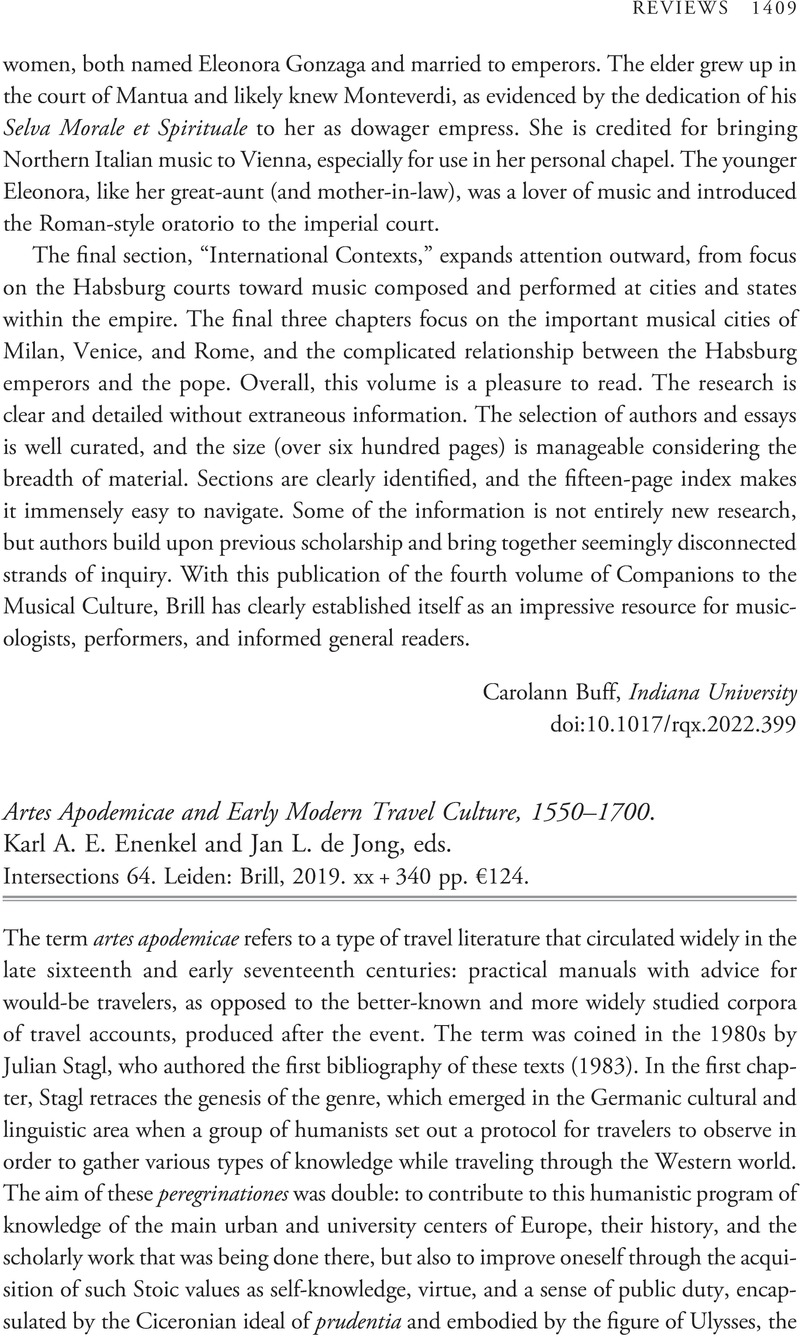No CrossRef data available.
Article contents
Artes Apodemicae and Early Modern Travel Culture, 1550–1700. Karl A. E. Enenkel and Jan L. de Jong, eds. Intersections 64. Leiden: Brill, 2019. xx + 340 pp. €124.
Review products
Artes Apodemicae and Early Modern Travel Culture, 1550–1700. Karl A. E. Enenkel and Jan L. de Jong, eds. Intersections 64. Leiden: Brill, 2019. xx + 340 pp. €124.
Published online by Cambridge University Press: 09 January 2023
Abstract
An abstract is not available for this content so a preview has been provided. Please use the Get access link above for information on how to access this content.

- Type
- Review
- Information
- Copyright
- Copyright © The Author(s), 2022. Published by the Renaissance Society of America



